
In 1865 a German chemist named Justus von Liebig started Liebig’s Extract of Meat Company in the UK. Liebig subsequently opened a factory in Uruguay to process beef extract products that were later sold under the trade name Oxo. One of their most popular offerings was tinned corned beef. The company marketed this stuff as Fray Bentos, so named after the Uruguayan town where the factory operated.

Fray Bentos corned beef was food for the Common Man. The company also produced glue in the same facility. Fray Bentos was delivered in one-pound tins that were easily portable. This made Fray Bentos ideal fodder for soldiers in the field. During the Boer War and later in World War 1 Fray Bentos was surprisingly popular among British Tommies. In fact, the term “Fray Bentos” made it into the informal military lexicon as a slang term for anything that was good. Now hold that thought.
The Setting
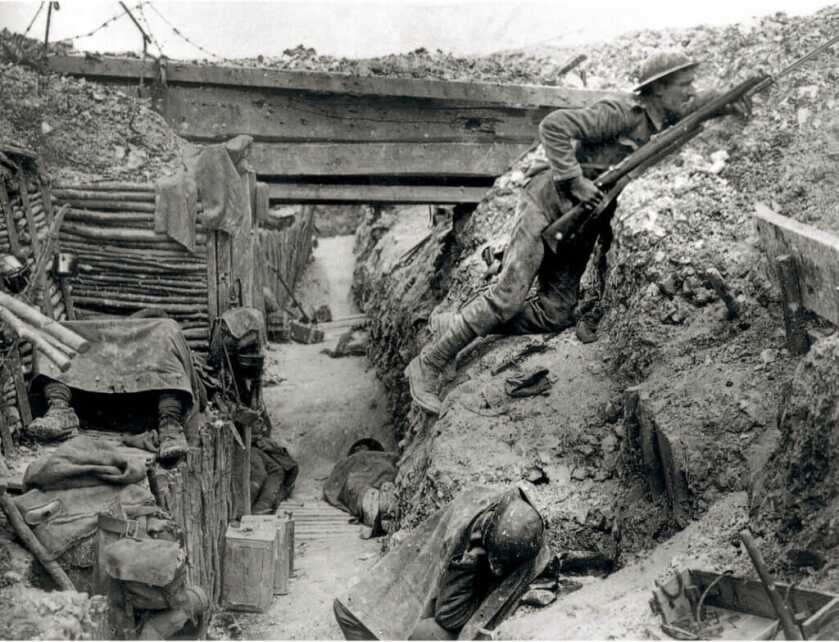
In July of 1917, the Allies launched the Battle of Passchendaele. This orgasmic bloodbath orbited around a campaign to wrest the ridges south and east of the Belgian city of Ypres in West Flanders from the entrenched Germans. Passchendaele lies on the easternmost ridge past Ypres, some five miles from the Bruges to Kortrijk railway. Seizing the Passchendaele Ridge would cut the main supply route for the German 4th Army and facilitate a continued Allied advance that was hoped might turn the tide of the war. The Battle of Passchendaele was a really big deal.
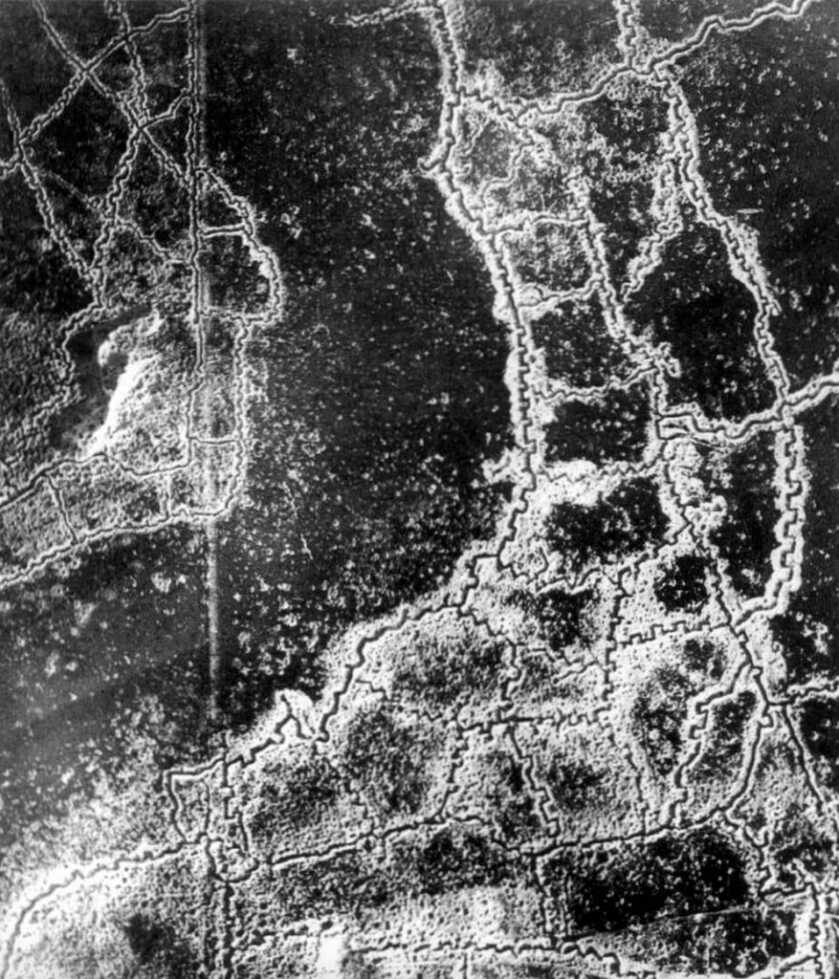
Launching a major campaign in Flanders in 1917 was not without controversy. The terrain was abysmal, particularly given the unusually heavy rains, and opinions were divided at the strategic level as to the wisdom of this grand plan. However, to the beleaguered troops on the ground little of that mattered. Their world was distilled down to a few yards of blood-soaked mud.
The Details
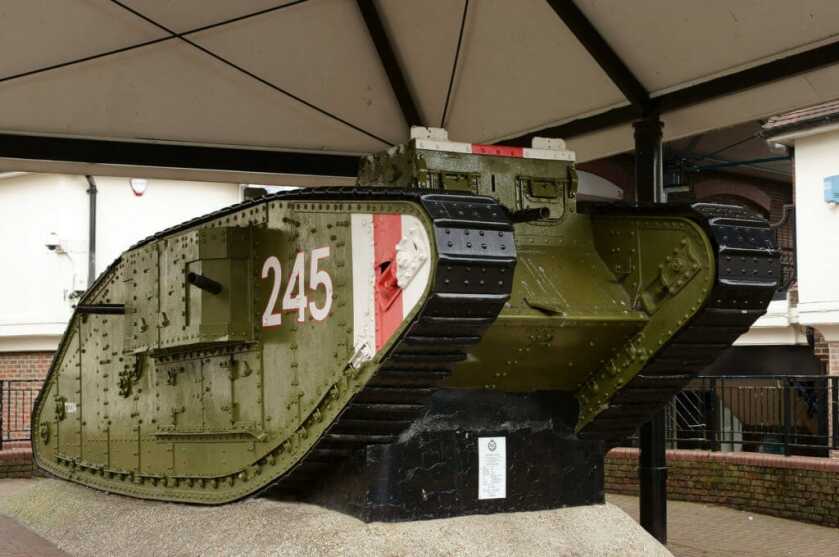
Tank F41 was a male Mark IV serial numbered 2329. While they enjoyed a common basic chassis, male and female Mk IV tanks differed in their primary armament. Male tanks sported a brace of 6-pounder cannon along with supporting machineguns. The female sort bristled with machineguns alone. The commander of F41 was Captain Donald Hickling Richardson. With the approval of his eight-man crew, CPT Richardson had christened their mount Fray Bentos. In combat, they all felt a bit like tinned meat.
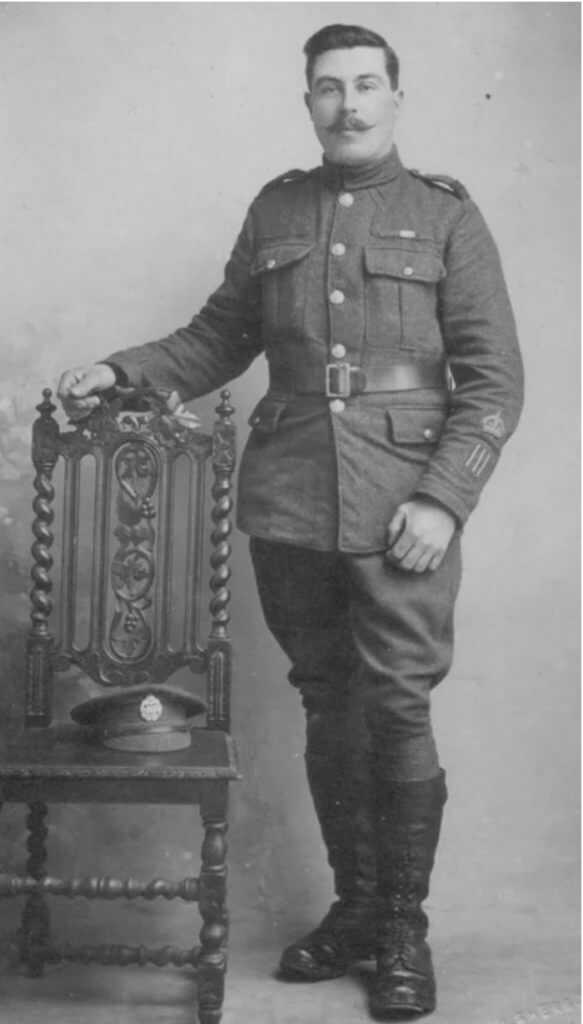
The crew of Fray Bentos was a cross-section of British culture. The second in command was 2LT George Hill, while the senior NCO was Sergeant Robert Missen. Lance Corporal Ernest Braedy was the only other Noncommissioned Officer. Gunners included William Morrey, Ernest Hayton, Frederick Arthurs, Percy Budd, and James Binley. At 0440 on August 22, 1917, these nine men left the line of departure with infantry support as part of an attack by the 61st Division near St. Julien. Their subsequent three-day ordeal became the stuff of legend.
The Fight
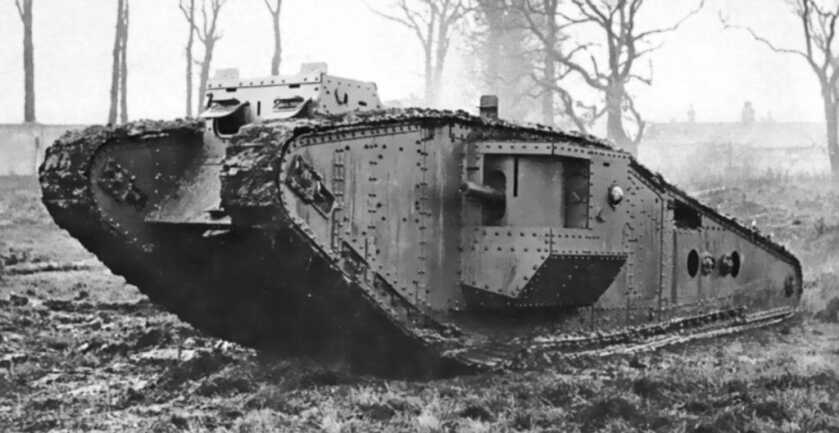
As Fray Bentos approached the Somme Farm they came under withering German machinegun fire. SGT Robert Missen, the gunner manning the port 6-pounder gun, silenced these Boche positions in short order. This was just the beginning of SGT Missen’s remarkable day.

At around 0545 with 2LT Hill at the controls, Fray Bentos approached Objective Gallipoli, an arbitrary map reference included as part of the overall scheme of maneuver. A German machinegun slathered the tank with machinegun fire, and one round found its way through the driver’s slit. This 8mm Maxim bullet struck 2LT Hill in the neck and knocked him out of the driver’s seat. CPT Richardson immediately took his place, but the terrain was ghastly.
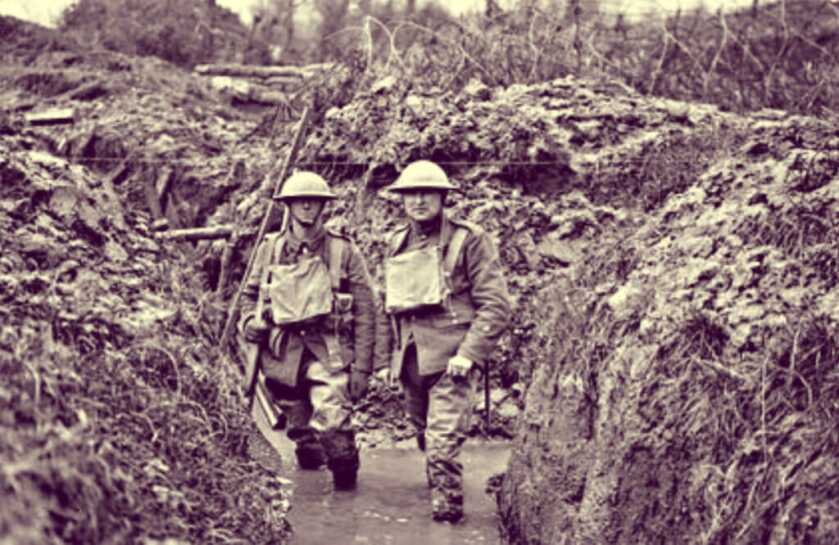
It’s tough for the civilized mind to visualize what this place was like. Trenches, barbed wire, poison gas, machineguns, and death defined the World War 1 battlefields. The earth was churned into chaos by countless tens of thousands of rounds of artillery. The rains had transformed the soft Belgian dirt into a sticky, deadly quagmire. There were numerous anecdotes of infantry troops wandering off from the accepted tracks and simply being consumed by the mud. It was for this sordid world that the tanks had been developed in the first place.
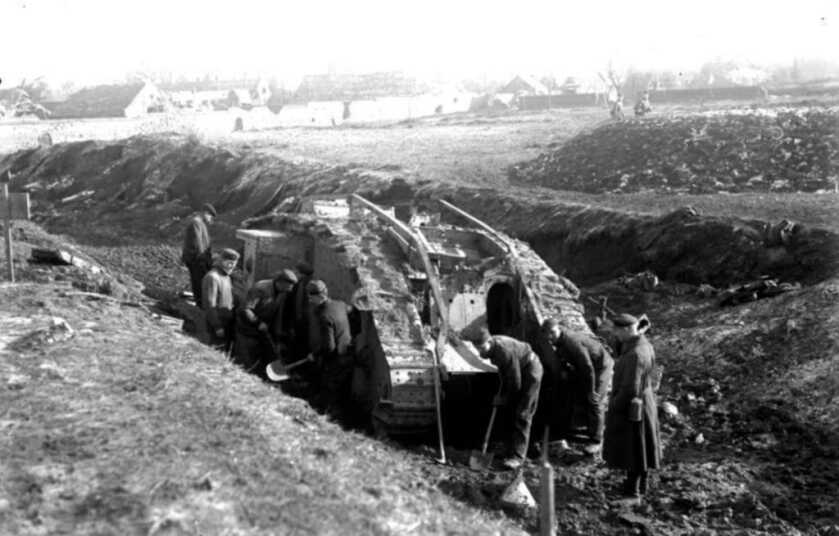
The Mk IV tank was a 28-ton behemoth that spanned some 26 feet from front to back. These massive tanks sported half-inch steel armor and were driven by a 105 BHP Daimler-Foster 6-cylinder inline sleeve-valve 16-liter engine. The Mk IV carried 70 imperial gallons of petrol and had a top speed of 4 mph. Over rough terrain, its operational range was around 35 miles.
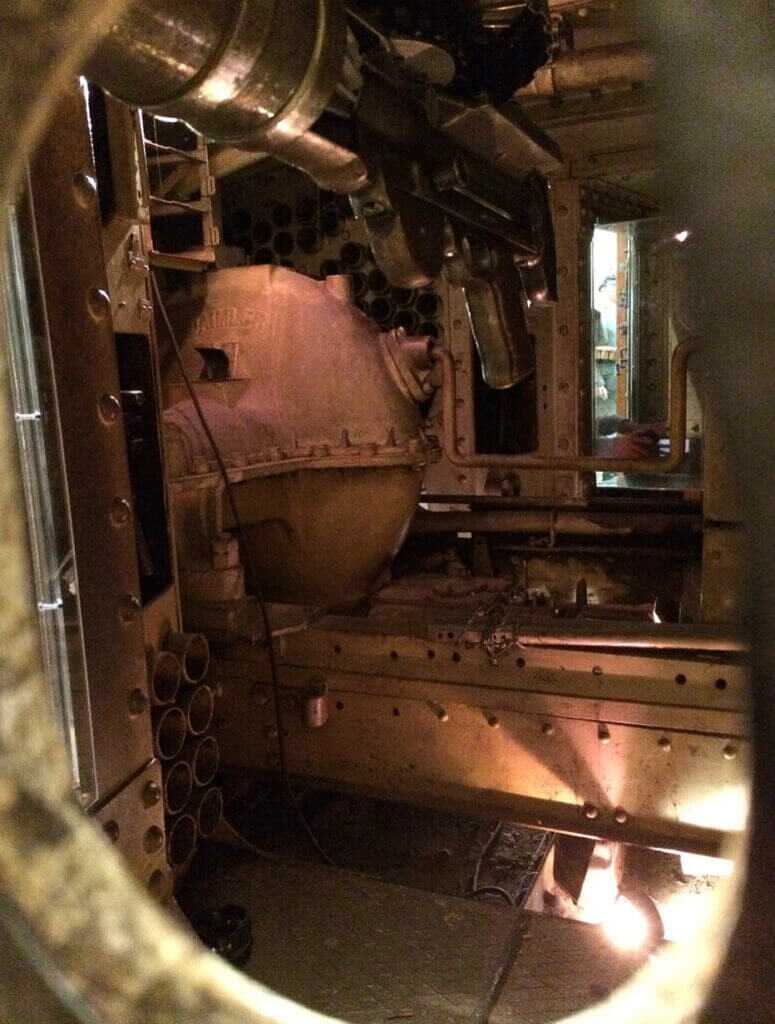
While the Mk IV was designed to get the British troops up and out of the trenches, life inside these early tanks was unimaginably horrible. The vehicles were cramped, miserable, and noisy. The Mk IV had no suspension, and direct fire from German artillery would burst a Mk IV like a grape. Even under peaceful circumstances, the buildup of fumes and carbon monoxide from the primitive gasoline engine would reliably sicken the crew. In combat, the interior of an operational Mk IV grew stifling hot and resembled hell.
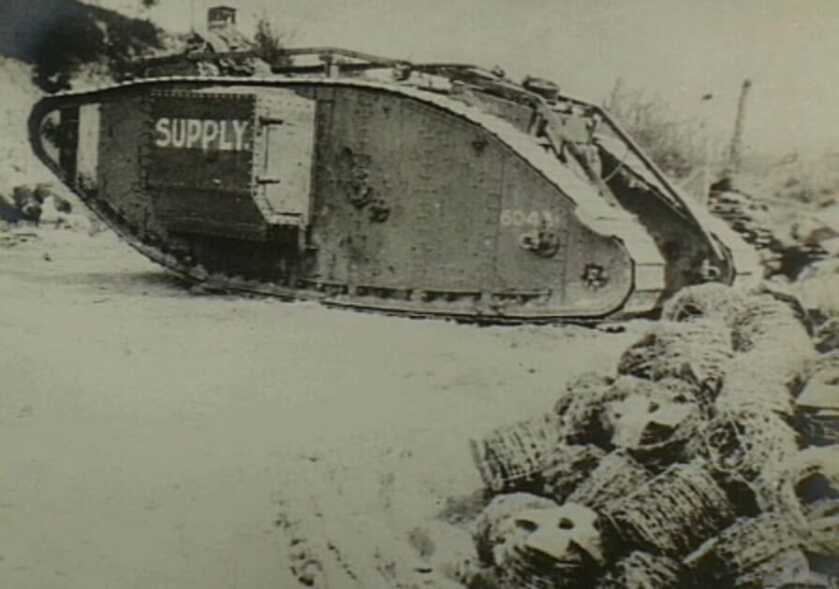
Driving a Mk IV was not like operating a modern armored vehicle. These primitive tanks were all but unmanageable over truly rough terrain. While CPT Richardson struggled mightily with the controls, Fray Bentos slid inevitably sideways until it was well and truly ditched. With that, now deep behind German lines, Tank F41 became a pillbox.
The Ordeal
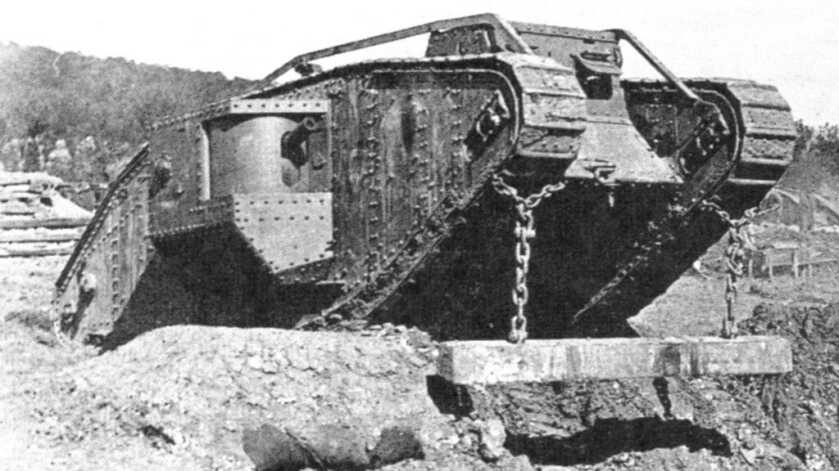
Soon after 2LT Hill was hit, gunners Budd and Morrey were hit as well. Mk IV tanks carried external ditching beams for just such eventualities. These heavy wooden timbers could be affixed to the tracks that spanned the entire periphery of the vehicle. Then by gunning the engine this beam would make its way around the tank and theoretically pull the heavy vehicle out of the quagmire. However, to affix the ditching beam one had to be outside the tank. With uncounted German soldiers surrounding the disabled vehicle at a range of some 30 yards, this was easier said than done. Regardless, SGT Robert Missen and LCPL Braedy tried it anyway.
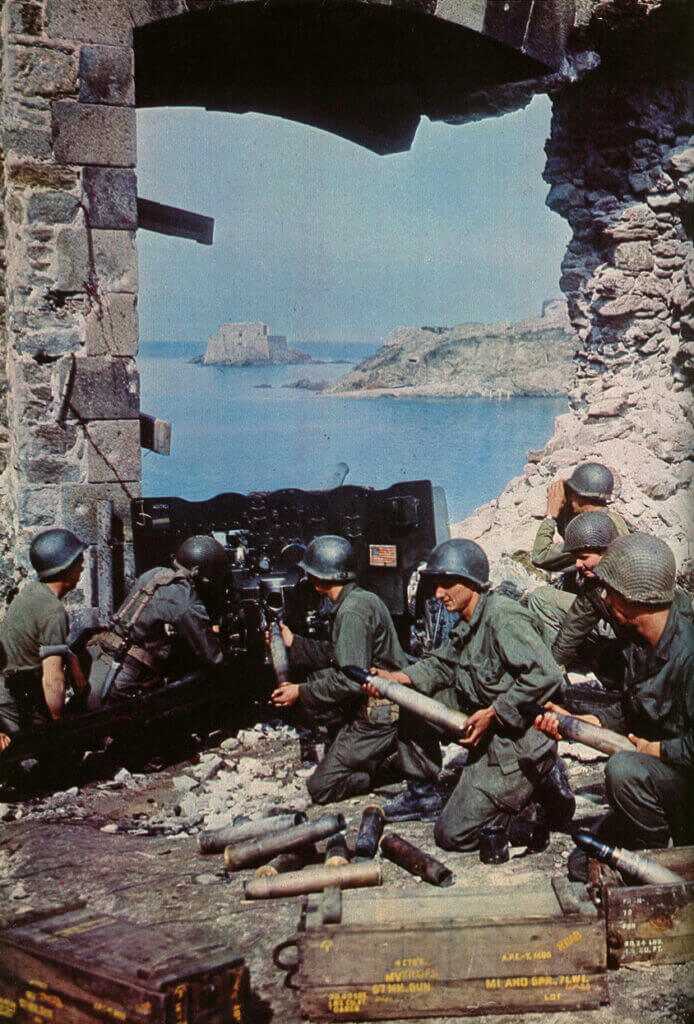
SGT Missen dove out of the tank on the starboard side, while LCPL Braedy performed the same maneuver to port. Braedy was cut to pieces immediately and died on the spot. Realizing his mission to be hopeless, SGT Missen returned to the tank. Both quick-firing 6-pounder cannons then went to work and effectively silenced the offending German machineguns.
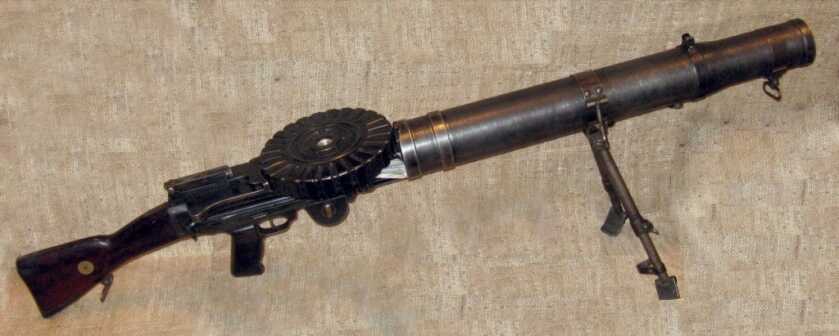
By 0700 the supporting British infantry had been forced to fall back, leaving Fray Bentos alone, disabled, and unsupported. The Germans smelled blood and moved in for the kill. The British crew responded with fire from their 6-pounder cannon and Lewis guns as well as individual rifles and pistols.
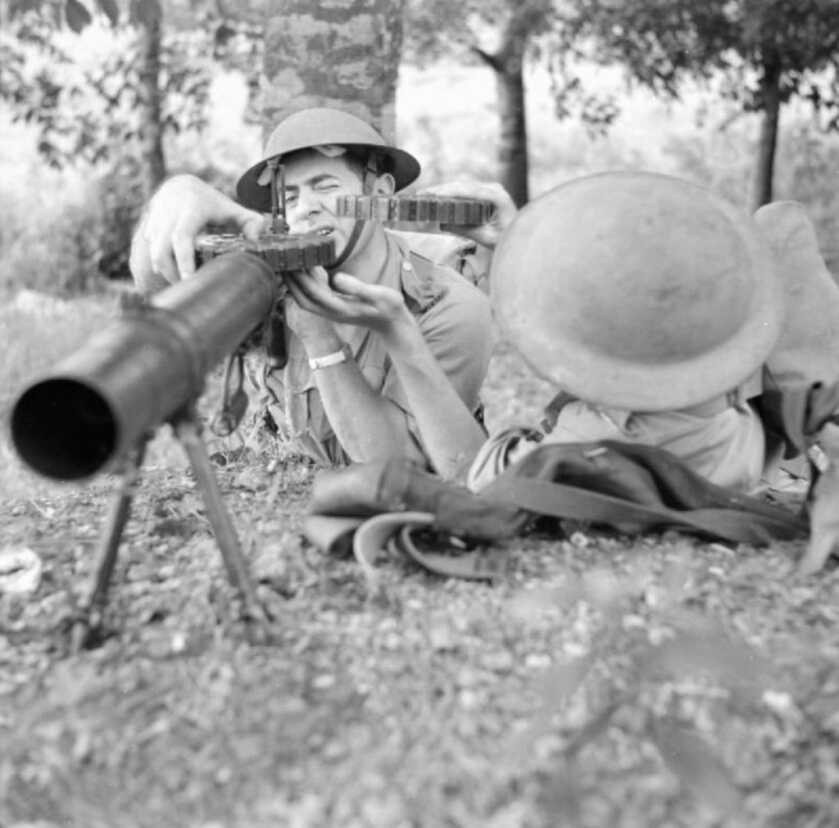
Fray Bentos carried a basic load of 332 rounds for the two 6-pounder guns along with its three amply-supplied .303 Lewis guns. Individual weapons included SMLE (Short-Magazine Lee-Enfield) bolt-action rifles and Mk VI Webley revolvers. By the standards of the day, Fray Bentos was a formidable war machine. When they designed and equipped her nobody imagined that this isolated tank would have to stand alone and be disabled in combat for three days. However, that’s just what she did.
Things Get Worse
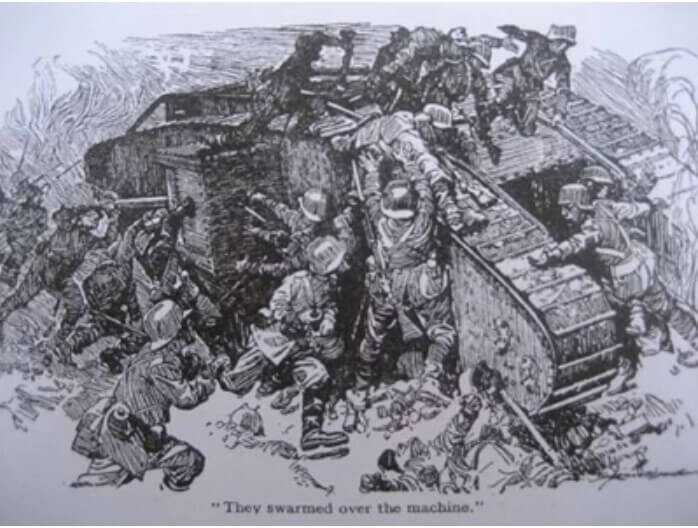
SGT Missen later related, “The Boche were in an old trench close in under the front of the tank and we could not get the Lewis onto them owing to the angle of the tank, but we shot them easily with a rifle out of the revolver flap in the cab.”

At this point the British presumed the tank to have been overrun and began firing on it as well. SGT Missen, a man with some truly epic stones, volunteered to exit the tank and brave the concentrated fire from both sides so as to, “Go back and warn the infantry not to shoot us as we should sooner or later have to clear out of the tank…I got out of the right sponson door and crawled back to the infantry.” By the time SGT Missen left on his suicide mission every member of the crew save Gunner Binley was badly wounded.

The remaining crew flashed a white rag from one of the portholes on the British side of the tank. This action combined with SGT Missen’s miraculous trek across no-man’s land finally curtailed the British fire. Throughout it all the Germans attacked the disabled tank time and time again. This went on from the 22d, all day of the 23d, and well into the 24th of August. Throughout it all the valiant crew of Fray Bentos continued to fight back with every weapon at their disposal.
Epilogue
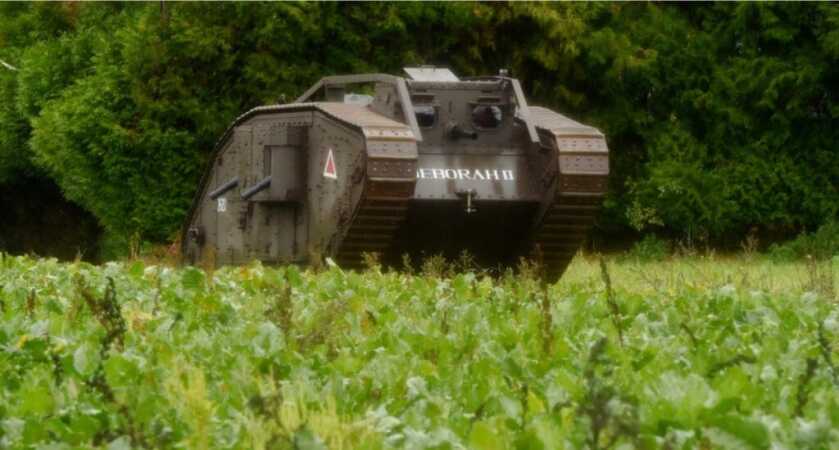
By 9 pm on the third day, CPT Richardson concluded that further resistance was futile. Despite their cumulative grievous wounds the crew removed the firing locks from the 6-pounders to disable them and retrieved all three machineguns. Under the cover of darkness, CPT Richardson and his crew eventually made their way back to the positions of the 9th Battalion of the Black Watch. There they left their Lewis guns to be used by the Black Watch gunners.
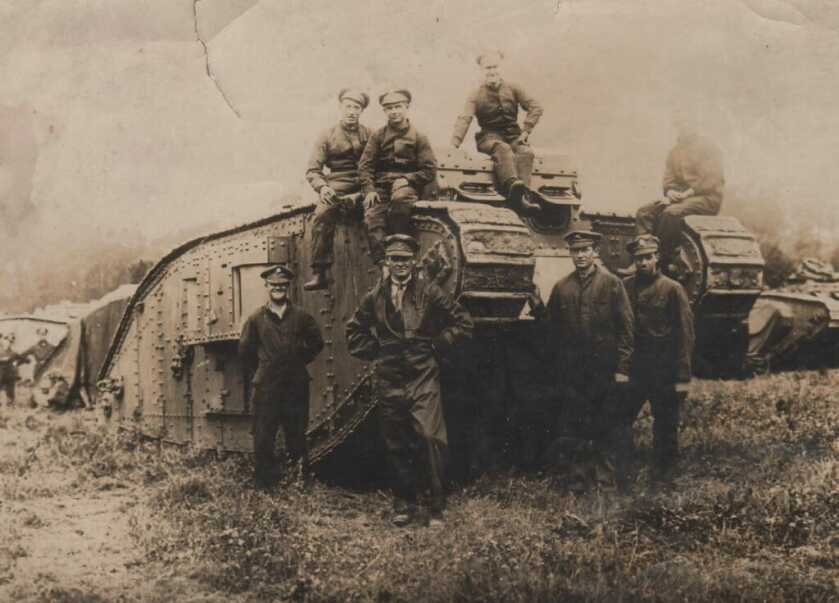
Ernest Braedy’s body was never recovered. Gunner Percy Budd was killed in action a year later in August of 1918 at age 22. The rest of the crew miraculously survived the war. The 60-hour ordeal of Fray Bentos saw them become the most highly decorated Allied tank crew of the war. Their extraordinary story of valor, devotion, and brotherhood served as inspiration for the epic 2014 David Ayer WW2 movie Fury.
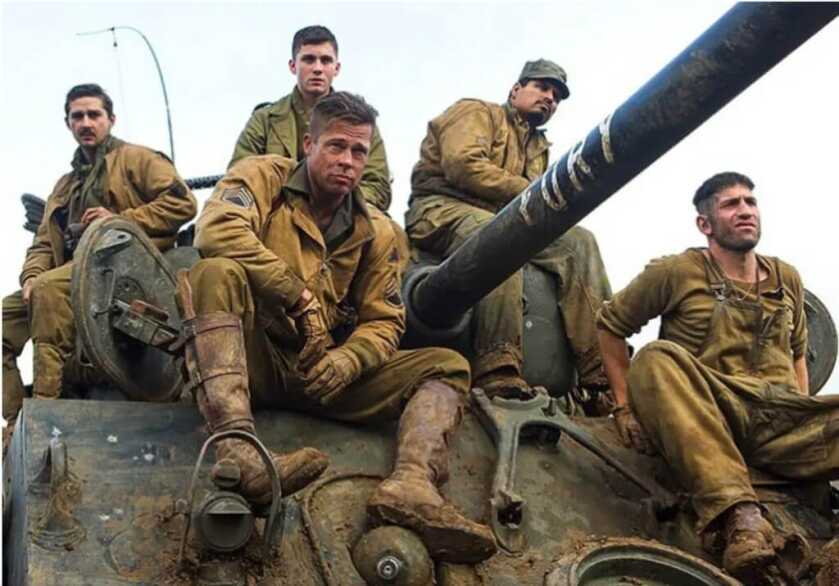


The first photo of a Mk IV “male” is actually an all machine gun “female”. But I suppose good men are hard to find.
Great read. Thanks for putting in the hard work.
The movie 1917 gives a good sense of how awful the trenches were during WWI. I had the honor of leading Boy Scout troop while stationed in Germany. We laid wreaths at US WWI cemeteries , and our campout at Verdun was unforgettable. We went for a historic 10K hike and a vehicle just ahead of us churned up an artillery round in the mud.
Damn!
Will, man you can write. I search each email for something you might have written and am pleasantly pleased when I see your name.
PS: someone mentioned the book, “Death in the Tall Grass” as a good read. I got the book and have finished it and was not disappointed. I’ve since given it to a Vietnam veteran buddy of mine. We used to hunt birds together.
All of Capstick’s books are a ‘good read’, I’ve had his entire collection for decades.
As a tanker vet (M-60A1)of the Vietnam era in Germany, I appreciate this article. We guarded the Fulda Gap and were ready for the Russian onslaught. We were told we would be a delaying force, in other words expendable. Luckily that never came.
Thank you for a great article on WW1
The beginning explanation is the part that you won’t know unless you dig deep into history. The way you wrote the story is like a great novel.
How the movie industry took this story and came up with FURY is beyond my understanding
Just the truth of what happened is way better than what they came up with
Your one of the people that can take the 5 W’s of a story and blend them together where you can’t stop reading
Thank you for your service and write more stories
I was not aware of this incident. Thanks for the excellent article Dr. Dabbs.